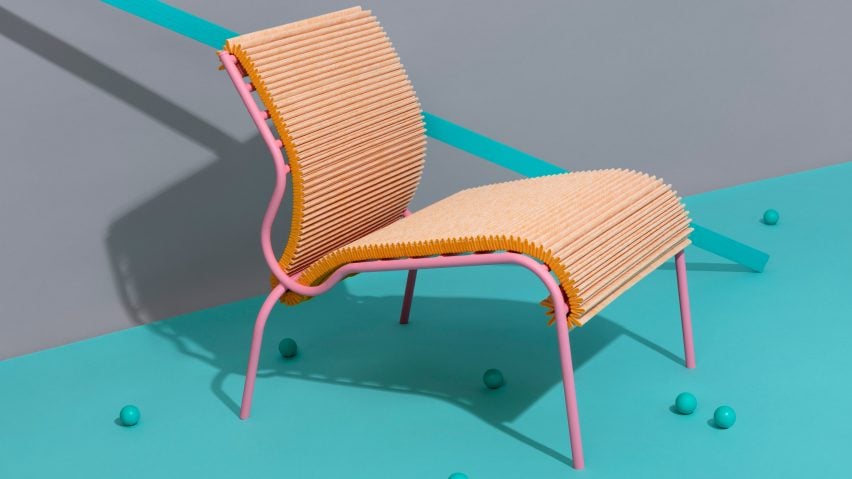A group of 10 designers from the Netherlands has teamed up with manufacturer Low & Bonar to create a set of products made from its non-woven Colback textile.
For an exhibition during this year's Dutch Design Week, the 10 participants presented their own interpretations of the unusual material, which is typically used for technical applications – from insulation and carpeting, to building dykes and roads.
Each of the designers were intentionally invited from a wide variety of disciplines, including interior, graphics and product design.
"The project started purely with the material," graphic designer Dana Dijkgraaf told Dezeen. "The company approached me and the other designers with one challenge: to research the aesthetic and functional features of Colback, and in the end, create a project with it."
For her offering, Dijkgraaf developed a visual language inspired by the title of the exhibition – In4Nite.
Using silk screening, digital and foil printing, she created rainbow-hued panels spread over folded layers of Colback.
Dijkgraaf also developed the catalogue for In4Nite from the same concept, using holographic typography on a Colback sheet reflected on silver paper.
"For me, the project was about the endless outcomes of the combination of different designers using the same material. It sounds like one plus ten is eleven, but for me the results are infinite."
Joris de Groot, inspired by the production processes of air filters, designed a pleated chair partly made from Colback. He collaborated with two factories, one specialising in laminating textiles, and the other specialising in pleating.
Klaas Kuiken created a collection of lampshades using laser-cutting techniques. Reminiscent of the moon and the sun's phases, the lamps play with the translucent qualities of the material.
Rick Tegelaar, a product designer who often focuses on materials, developed a 3D print-like technique to "print" Colback fibres directly onto non-woven Colback material.
The designer built a machine that can "iron" the Colback yarn to the non-woven Colback. This customised FDM (fused deposition modelling) printing process adds rigidity to materials, and the result of his experiment was a series of six panels each featuring a different aspect from the study.
"Through pragmatic experiments and theoretical research, I discovered that Colback can be 3D-printed exceptionally well due to the unique core-skin composition of its fibre," said Tegelaar. "This triggered my interest to really look into the fibre and research its capabilities."
Tegelaar's project – and the exhibition as a whole – aimed to prompt other industries to explore different possibilities of the Colback material.
"We've now started a research project with a global footwear brand to try to implement the printing technique in their process." Tegelaar said. "In this way, we can potentially eliminate the use of glue in the fabrication of shoes."
Other pieces on show at the exhibition ranged from acoustic panels and window coverings, to a vertical garden and a cavernous chair.
In4Nite was on show during this year's Dutch Design Week, which took place in Eindhoven from 21 to 29 October 2017.
Also during the festival, Dezeen hosted a series of talks discussing how design can answer some of the world's big problems – these talks are available to watch via our Good Design for a Bad World page.

